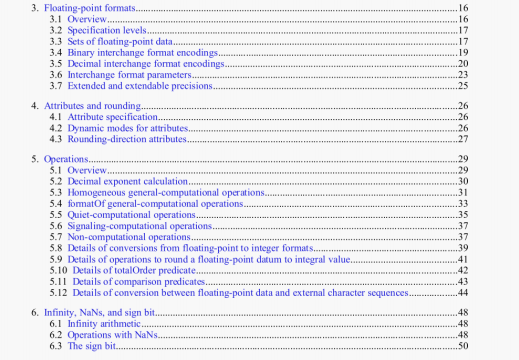IEEE Std 802.1CF-2019 pdf download
IEEE Std 802.1CF-2019 pdf download.IEEE Recommended Practice for Network Reference Model and Functional Description of IEEE 802R Access Network.
Each of the three virtualized networks fully realize the complete NRM, including NMS and its own relations with SSs as well as access routers. Each of the instances can have its completely separate arrangements, and the virtualized networks are completely independent of each other, except in the use of the access infrastructure resources, which are shared among the access networks and imply some limitations, as the sum of used resources cannot exceed the total available resources. All virtualized access networks are connected through RiO to the CIS, which provides access to the infrastructure parameters and allows for request of dynamic allocation of resources. As the access infrastructure is shared among multiple access network instances, an access network can request to the orchestrator modifications to the lower PHY parameters through the CIS, and it becomes possible that the resources are dynamically allocated by the ANC depending on load conditions and service requirements.
5.10 Deployment scenarios
5.10.1 Introduction
Subclauscs 5.10.2 through 5.10.9 present a variety of deployment scenarios of the IEEE 802 NRM to show its applicability to many different kinds of IEEE-802-based networks. The presented use cases are examples and are not exhaustive. There are further use cases possible beyond the presented examples.
5.10.2 Wireless local area network (WLAN) router
The term WLAN router denotes a single device commonly used in residential networks to provide Internet access to a number of terminals over either a wireless or a wired connection. Usually a WLAN router consists of the following functional elements:
An Ethernet port for the network connection to a digital subscriber line (DSL) or cable modem.
A router with a Dynamic Host Configuration Protocol (DHCP) server, network address translation
(NAT), and a firewall to allow multiple terminals to communicate concurrently into the Internet
through a secured gateway.
An Ethernet bridge providing multiple Ethernet ports to establish a small residential LAN for wired connections of terminals and local services.
One or more IEEE 802.11 radio interfaces, which provide connectivity for WLAN terminals.
In addition, the WLAN router contains a local network management function, often realized through a web- based portal running on a microcontroller. The microcontroller also performs the routing functions, as well as the higher layer control and data frame processing functions of IEEE 802.11.
Figure 13 shows the circuit diagram of a common implementation of a WLAN router. Chip technology allows integration of all WLAN router circuitry—likely without the random-access memory (RAM) and the field-programmable read-only memory (FPROM)—onto a single chip.
Figure 14 depicts the functions and interfaces of a WLAN router mapped to the functional decomposition of the NRM. It is clearly visible that a WLAN router comprises all the functional entities of the NRM and also implements a LAN-WAN gateway function. It acts as access router to the LAN side and as terminal to the wide area network (WAN) side to provide IP connectivity from a local access network to a remote access network.
Through the high integration of all the functions of an IEEE 802 access network into a single device, only a few reference points of the NRM become exposed. All the internal interfaces of the access network—as well as the interfaces of the access network to the access router, SS, and NMS—exist only as functional interfaces within the firmware of the WLAN router. Implementations may favor the adoption of the reference points as defined in this recommended practice, but could also follow other decomposition and interfacing approaches.




